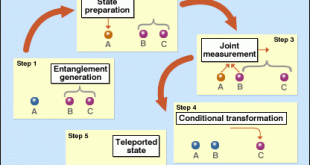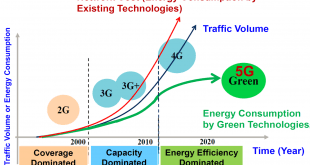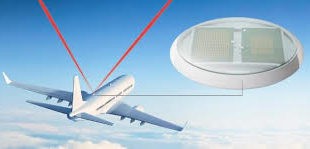The Indian Army has declared 2024 as the “Year of Technology Absorption,” signaling its commitment to embrace cutting-edge technologies to gain a strategic edge in modern warfare. This shift is part of the broader vision of Atmanirbhar Bharat (Self-reliant India) and Make in India, aimed at reducing reliance on foreign …
Read More »The Quantum Internet: Connecting Quantum Computers and Sensors for a New Era of Communication
Introduction The digital revolution we know today is powered by classical computing and the internet, both of which have transformed every aspect of modern life. But an even more transformative technological leap looms on the horizon: the quantum internet. Unlike the classical internet, which transmits information in bits (0s and …
Read More »3D Processors: Pioneering the Future of Computing
As technology continues to evolve at an unprecedented pace, 3D processors have emerged as a groundbreaking innovation with the potential to revolutionize various industries. Unlike traditional 2D processors, which have been the backbone of computing for decades, 3D processors introduce a new dimension to the way we process and transmit …
Read More »Breaking the Boundaries: DARPA’s Space-BACN Revolutionizes Military Optical Satellite Communications
Introduction: In the vast expanse of space, where communication is paramount for military operations, traditional methods often fall short. Enter DARPA’s Space-BACN (Battlefield Airborne Communications Node), a groundbreaking initiative that is set to revolutionize military satellite communications through the development of space optical communications. In this article, we delve into …
Read More »Understanding the TCP/IP Model and Its Protocols: The Foundation of Modern Networking
In the realm of digital communication, the TCP/IP model stands as a cornerstone for how data is transmitted, received, and understood across networks. From browsing the web to sending emails, the TCP/IP model governs the flow of information, ensuring that our digital interactions are seamless and reliable. This blog post …
Read More »Addressing the Energy Efficiency Challenges of 5G: Pioneering Green Communications and Networking
The rollout of 5G technology promises faster speeds, lower latency, and the ability to support an ever-growing number of connected devices. However, as with any major technological advancement, 5G brings its own set of challenges—one of the most pressing being energy efficiency. As we transition into this new era of …
Read More »VoIP Over Satellite: Bridging the Gap Between Connectivity and Communication
Introduction Voice over Internet Protocol (VoIP) has revolutionized the way we communicate, enabling voice conversations to be transmitted over the internet rather than traditional telephone lines. While VoIP has become commonplace in many terrestrial networks, its application over satellite links presents unique challenges and opportunities. As satellite technology continues to …
Read More »Radio frequency identification (RFID) for large product-tracking network of smart products and Military Asset tracking
In the ever-evolving landscape of modern technology, Radio Frequency Identification (RFID) has emerged as a game-changing solution for seamless and efficient product-tracking networks and military asset management. With the ability to revolutionize supply chains, logistics, and security systems, RFID is driving a paradigm shift in how smart products and military …
Read More »AIoT: The Convergence of Artificial Intelligence and the Internet of Things
In today’s rapidly evolving technological landscape, two groundbreaking innovations are making waves: Artificial Intelligence (AI) and the Internet of Things (IoT). Individually, these technologies have transformed industries, enhanced efficiencies, and created new opportunities. However, the fusion of AI and IoT, known as the Artificial Intelligence of Things (AIoT), is set …
Read More »Phased Array Antenna technology: Revolutionising 5G, SATCOM to Defense EW and Radars
Unlike traditional mechanically steered antennas, phased arrays use electronic control to manipulate the direction of the radio beam. This seemingly simple change unlocks a range of possibilities in communication, radar technology, and even weaponry. Phased array antenna technology is revolutionizing telecommunications and defense, offering unprecedented capabilities in 5G networks, Satellite Communications …
Read More » International Defense Security & Technology Your trusted Source for News, Research and Analysis
International Defense Security & Technology Your trusted Source for News, Research and Analysis



